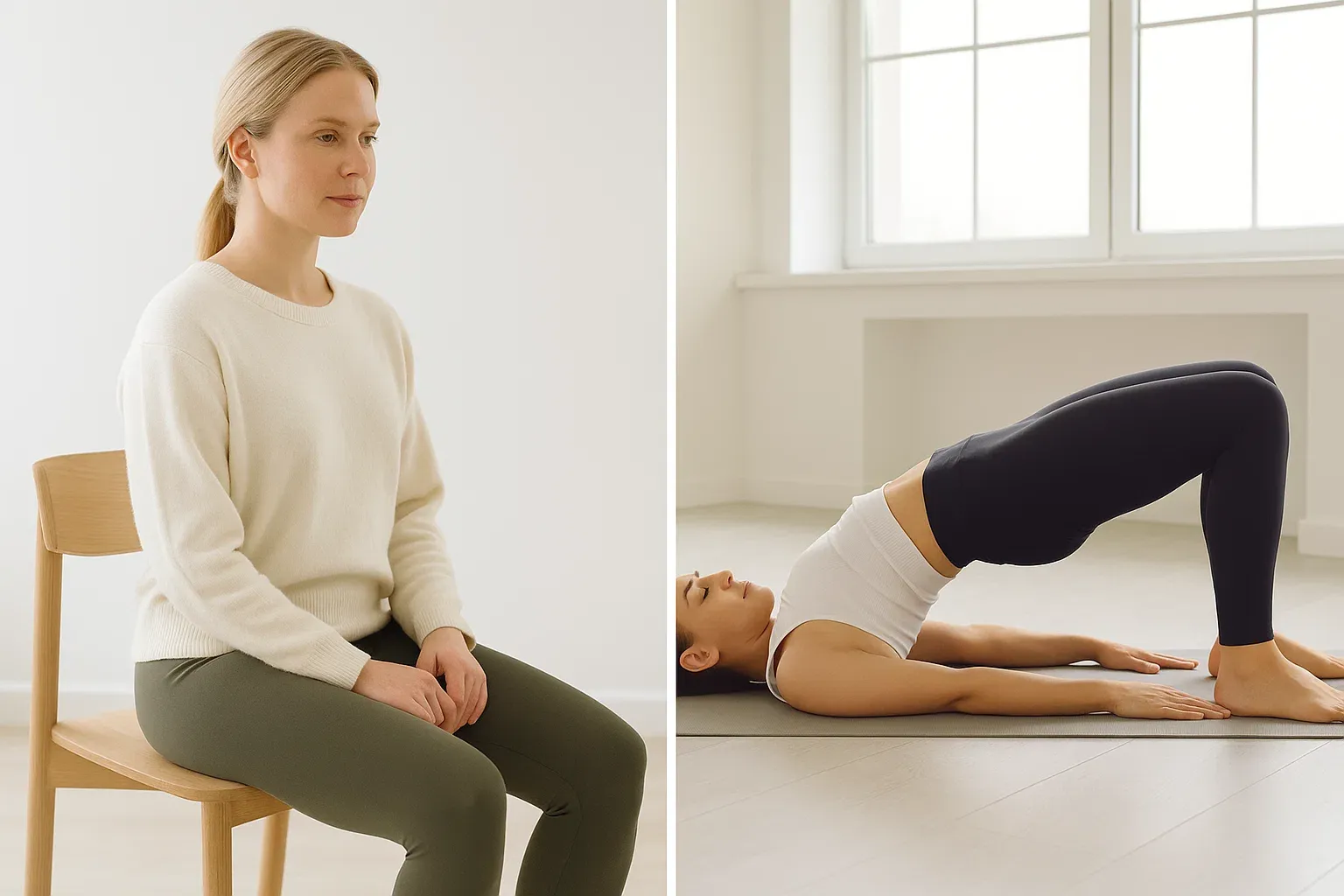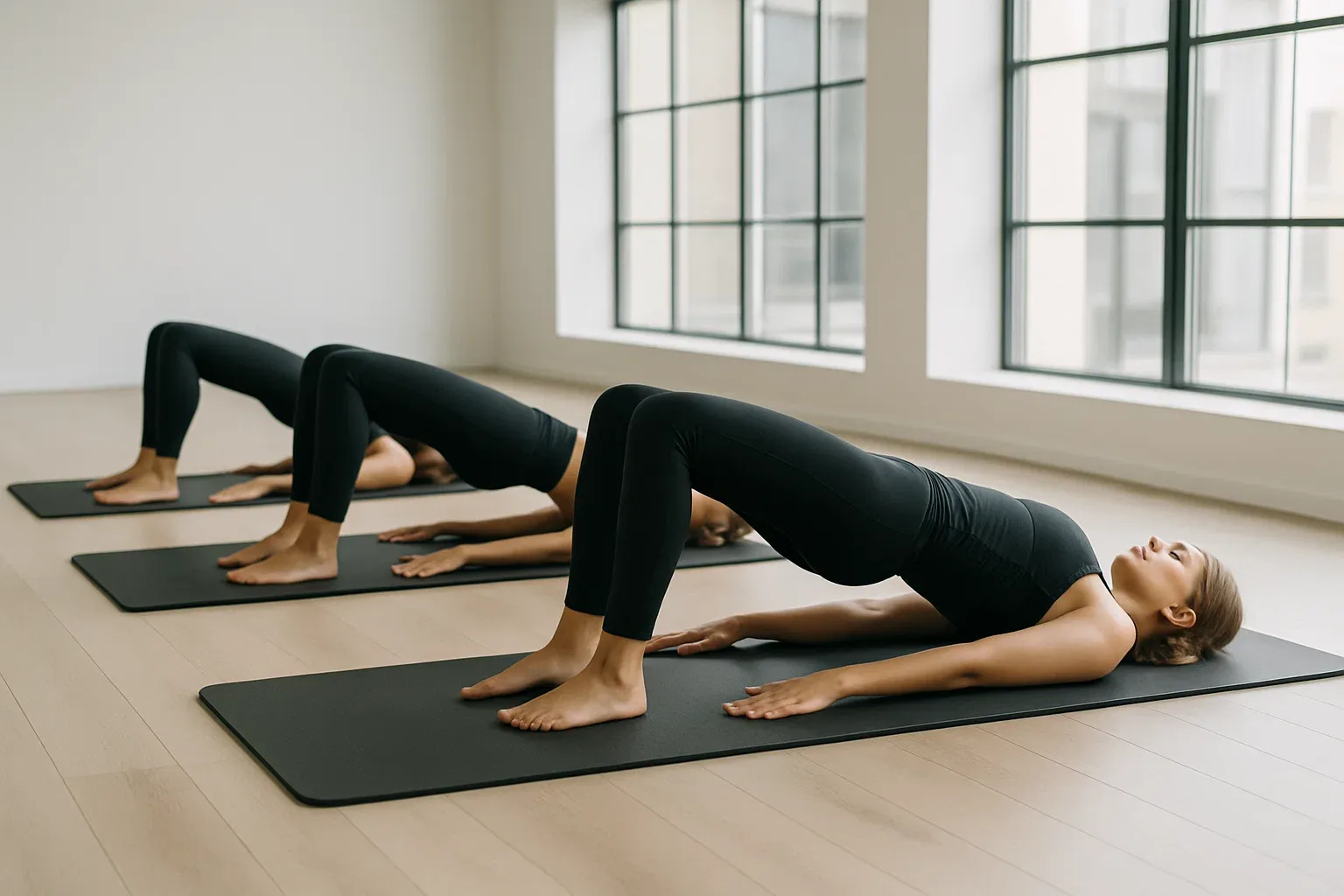- Top 5 Everyday Habits That Weaken Your Pelvic Floor — And How to Fix Them
- Pelvic Floor Pilates for Beginners: Strengthen Your Core From the Inside Out
- The Connection Between Posture and Pelvic Floor Health
- How to Reduce Bladder Leaks With 10 Minutes of Pilates a Day
- Pilates vs Kegels: Which Is Better for Pelvic Floor Health?
- Improve Intimacy and Confidence With These Simple Pelvic Floor Moves
Pilates vs Kegels: Which Is Better for Pelvic Floor Health?
When it comes to improving pelvic floor health, most people think of Kegel exercises first. They’ve been recommended by doctors for decades as a simple way to strengthen the pelvic muscles. But in recent years, Pilates has gained attention for its ability to train not just the pelvic floor, but the entire core system that supports it.
So which one is better—Pilates or Kegels? Let’s break it down, compare their benefits, and help you decide what works best for your body.

What Are Kegels?
Kegel exercises are small, targeted contractions of the pelvic floor muscles. You can do them almost anywhere—at your desk, while waiting in line, or lying in bed.
How to do a Kegel:
- Imagine stopping the flow of urine midstream.
- Hold that contraction for 3–5 seconds.
- Relax for 5 seconds.
- Repeat 10–15 times.
Kegels are simple, discreet, and can improve bladder control over time. However, they only focus on the pelvic floor muscles in isolation, and many women struggle with doing them correctly.

What Is Pilates?
Pilates is a full-body system of movement designed to build strength, flexibility, and control. What makes it unique for pelvic health is its emphasis on:
- Core activation – engaging the deep abdominal muscles (transverse abdominis).
- Breathwork – coordinating inhalations and exhalations to support pelvic floor engagement.
- Posture and alignment – reducing pressure that weakens pelvic support.
Instead of working the pelvic floor alone, Pilates integrates it into a broader network of muscles, creating stability and balance throughout the body.

Benefits of Kegels
Kegels are especially useful for:
- Bladder leaks (stress incontinence) – helping reduce leaks when coughing, sneezing, or exercising.
- Postpartum recovery – reawakening pelvic floor muscles after childbirth.
- Pelvic organ support – strengthening to help with mild prolapse.
They’re fast, easy, and can be done without equipment. However, Kegels can sometimes create muscle tension or imbalance if done incorrectly or excessively.
Benefits of Pilates
Pilates offers a more holistic approach to pelvic health. Regular practice can:
- Strengthen the entire core and pelvic floor connection.
- Improve breathing mechanics, which directly affects pelvic support.
- Enhance posture, reducing downward pressure on the bladder and uterus.
- Build overall flexibility and mobility.
- Support long-term spinal and hip health.
Another big plus: Pilates workouts are engaging, varied, and fun—making it easier to stay consistent compared to repetitive Kegels.

Common Mistakes with Kegels
Many people believe they’re doing Kegels right but are actually:
- Over-tightening the glutes or thighs instead of the pelvic floor.
- Holding their breath instead of coordinating with exhalation.
- Only contracting without practicing relaxation.
This can lead to more tension in the pelvis rather than better function. That’s why guidance and body awareness are so important.
Pilates vs Kegels: Which Should You Choose?
The truth is—you don’t have to choose one over the other. In fact, the best pelvic floor routine combines both:
- Kegels help you isolate and strengthen the pelvic floor directly.
- Pilates teaches you to integrate that strength into everyday movement, posture, and breathing.
Think of Kegels as learning to “switch on” the pelvic floor, while Pilates helps you use it in real life—when lifting, bending, or even laughing.
Sample Routine to Try
Here’s how you can combine both in less than 10 minutes a day:
- 5 minutes of Kegels – Short holds (3 seconds), then long holds (10 seconds).
- 5 minutes of Pilates – Try bridges, heel slides, or seated marches while focusing on breath and pelvic engagement.
👉 Want to discover which routine is best for you?
Take this Pelvic Floor Quiz and get your personalized program.

Everyday Takeaway
Kegels are powerful, but limited on their own. Pilates offers a bigger-picture approach that connects your pelvic floor to your whole body. Together, they create the strongest foundation for bladder control, posture, and confidence.
If you’ve ever struggled with leaks, pelvic discomfort, or core weakness, don’t wait until it gets worse. Just a few minutes a day can transform how your body feels and functions.
👉 Start with small steps today. Take this Personalized Pilates Quiz to find out which exercises are right for your body and goals.